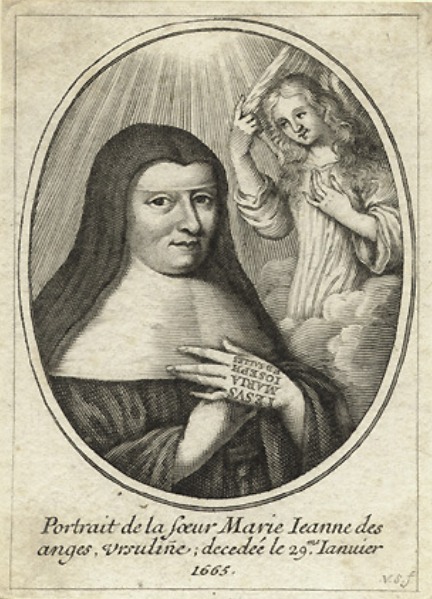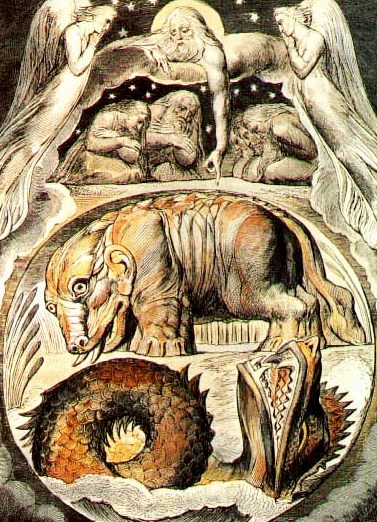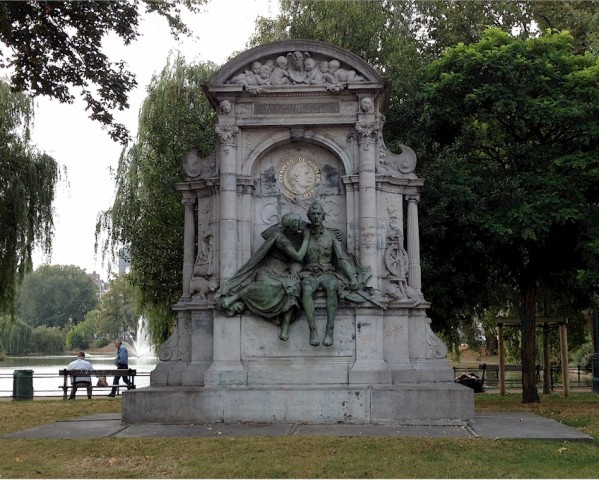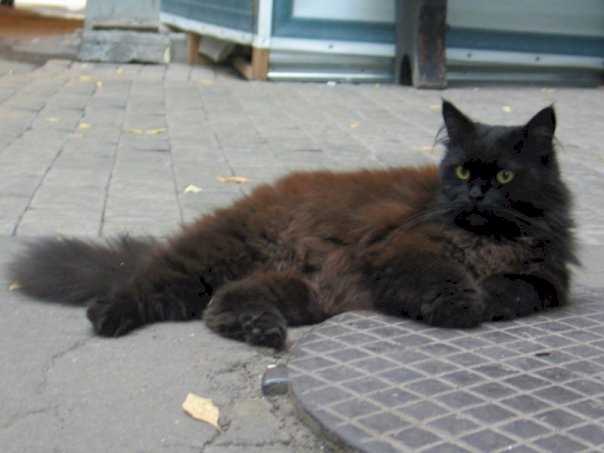Behemoth
English > Characters > Demonic characters > Behemoth
Context
Behemoth is the giant cat, extremely evil and fond of firearms, who finds demonic pleasure in challenging people and putting everything in a blaze with a primus stove. He executes the most violent punishments, cuts off heads and is unbeatable with a browning in his hands. And when he gets accidentally hit by a bullit, he just needs a sip of gasoline to regain his strength.
Prototype
In the archives of Mikhail Bulgakov have been founde xcerpts of the book The History of the relation of Man with the Devil by Mikhail Aleksandrovich Orlov from 1904. In this work is described the course of a witchcraft trial that has been held in Loudon in France in 1634 at the behest of Armand Jean du Plessis (1585-1642), better known as Cardinal de Richelieu. In a monastery of Ursulines the nuns said that they had been visited and possessed by demons.
The mother superior of the monastery, Marie Jeanne de Belcier (1602-1665), also known as Marie Jeanne des Anges, said they were possessed by no less than seventeen demons, including the devil Behemoth. He stayed in the womb of the abbess and was described as a monster with an elephant's head, a trunk and fangs.
The priest Urbain Grandier (1590-1634), who had a rather casual attitude to celibacy, and who had also regularly criticized Cardinal de Richelieu, was accused of having made a pact with the devil and having seduced the nuns. He was convicted and died at the stake on August 18, 1634. After the death of Grandier, however, the signs of possession did not stop.
The Jesuit Jean-Joseph Surin (1600-1665) was assigned as the spiritual leader, confessor and exorcist of mother Jeanne des Anges. He used instrospection as a method to fight the possession, but that was not easy. Especially the devil Behemoth was very persistent. He forced the abbess to curse continually, and could only be expelled after a visit to the grave of Saint Francis of Sales (1567-1622) in Annecy.
Бегемот [begemot] is in Russian a synonym for гиппопотам [gippopotam] or hippopotamus. Anna Richardovna, the secretary of Prosha Prochor Petrovich, described Behemoth as «a tomcat, black, a colossus as an hippopotamus».
In the biblical Book Job 40: 10-19 you find a description of a huge monster, referred to in Hebrew as בהמות [behemoth]. Until recently, bible translators didn't know which way to go with this word because they didn't know any beast with «a tail like a cedar and an enormous power in his abdominal muscles and loins».
Some chose for an elephant, others for an hippopotamus, but they all knew that neither of these could be accurate. That's why English translators sometimes just left the word behemoth as it was. There is also a behemoth in other Jewish writings, and always reference is made to something big and colossal.
Sometimes it is suggested, among others by the Dutch biologist and theologian Willem Ouweneel (°1944), that the brontosaurus, which indeed had a firm tail, could have been the inspiration for the biblical behemoth. But the dinosaurs went extinct 65 million years ago, while the first traces of the homo sapiens are only 100,000 years old. The dinosaurs have thus never lived together with man.
In circles of devil experts, Behemoth is also seen as the devil of the desires of the stomach. It could explain why he's so interested in the food at the currency store Torgsin in chapter 28.
In The Master and Margarita, Behemoth is a black cat. In the old popular beliefs of large parts of North America and Europe, black cats bring bad luck, and are often associated with witches. In some parts of China, black cats are known as bearers of the famine. According to Bulgakov's second wife Lyubov Evgenevna Belozerskaya (1895-1987), the prototype for Behemoth was their own pet Flyushka, a big grey cat.
Two cats
Behemoth is now one of the most popular characters from The Master and Margarita, or at least one of the most frequently portrayed. But one moment in time, he was close to having competition. In the very first version of the novel from 1928-1929, which was then still called Черный маг [Chorni mag] or The Black Magician, we read the following sentence when the theatre's buffet master visits Woland: «Второй кот оказался в странном месте на карнизе гардины» or «The second cat was sitting in a strange place on the curtain rod». So, Bulgakov was thinking of two cats in the beginning, an idea he dropped in the following versions.
Transformation
In chapter 32 of The Master and Margarita, when the demonic characters are transformed again to their original corporeal form, Behemoth changes into a slim youth, a demon-page, and «the best jester the world has ever seen».
This transformation could have been inspired by the legendary character of Thyl Ulenspiegel. In 1895, composer Richard Strauss (1864-1949) had made the symphonic poem Till Eulenspiegels lustige Streiche based on the novel The Legend of Ulenspiegel and Lamme Goedzak, written by the Flemish author Charles de Coster (1827-1879) in 1867.
This novel became very popular in Russia. The legend of Thyl Ulenspiegel has many variants. In the version of de Coster he was a man of the people and a jester from the 16th century during the inquisition which the Spanish King Philip II (1527-1598) fought against the Protestants. Ulenspiegel was born on the same day as Philip II, by the way: «Tonight, two boy babes are born, one in Spain (Valladolid), the Infante Philip, the other in the country of Flanders (Damme), the son of Claes.»
After his father Claes died at the stake, Thyl became a Flemish freedom fighter who, together with his foster sister and beloved Nele and his good friend Lamme Goedzak fought against the ecclesiastical and Spanish rule, driven by the words «the ashes of Claes beat against my heart».
The book by Charles de Coster was adapted for screen in Russia in 1976 as the film in two parts Легенда о Тиле [Legenda o Tile] or The Legend of Thyl by the duo Aleksandr Alov and Vladimir Naumov, who had also made a film on Bulgakov's play The flight in 1970. This last film can be found in our web shop with subtitles in English.
>Click here to see the film in our web shop
For the trivia: in the archives of the Russian film studio Mosfilm are still fragments of the auditions for the film The Legend of Thyl. On one of them we can see how the actor Aleksander Abdulov (1953-2008) auditioned for the role of Thyl Ulenspiegel. Abdulov did not get the part, but later on, in 2005, he would play a star role as Koroviev in the television series The Master and Margarita by Vladimir Bortko. This series can also be found with English subtitles in our web shop.
Click here to see the series in our web shop
Share this page |
Demonic characters
Images
Stepan
Your guide through the novel

In this section are explained, per chapter, all typical notions, names of people and places, quotations and expressions from the novel with a description of the political, social, economical and cultural context.




